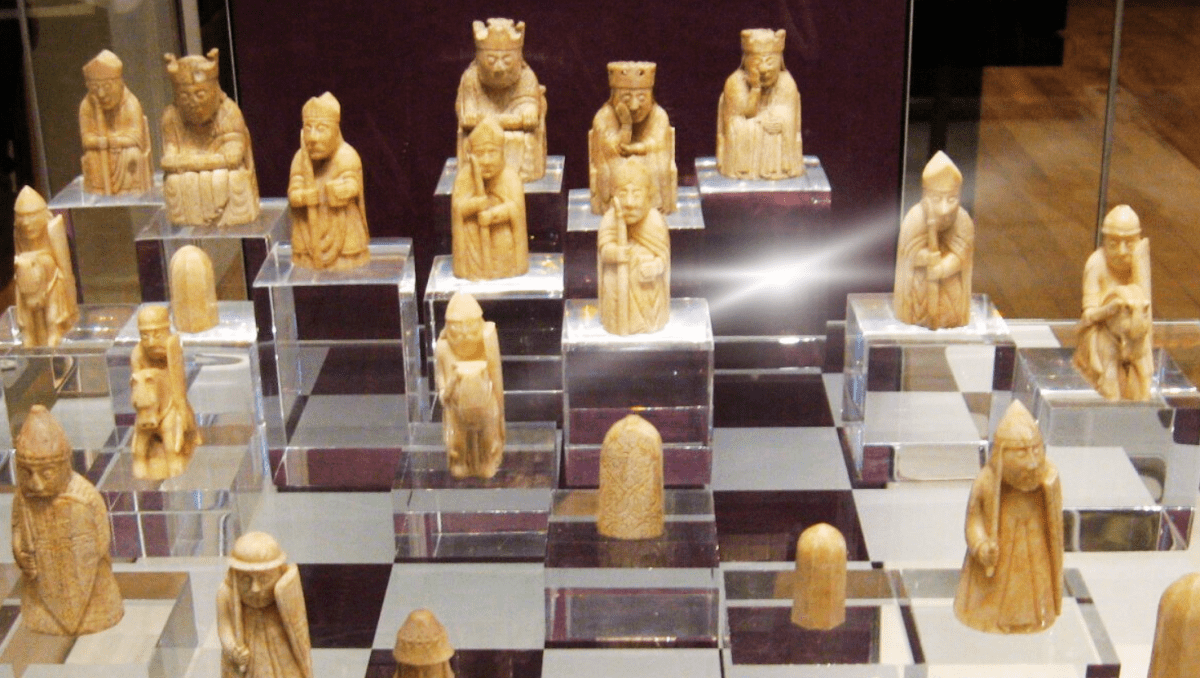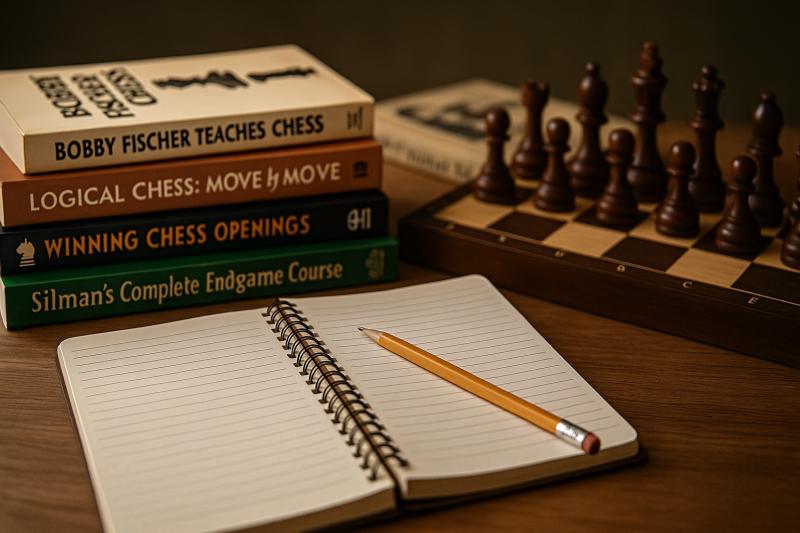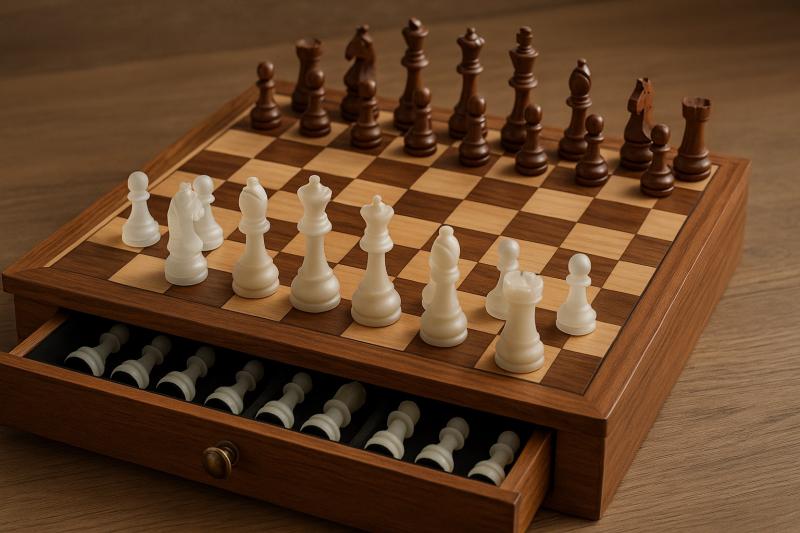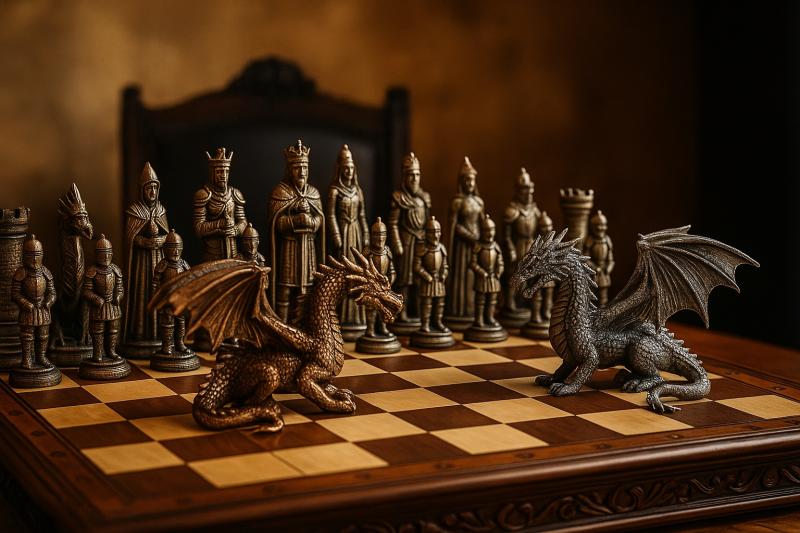At Chess Kitty, we’re always curious about the stories behind the pieces — and few are more captivating than the tale of the Isle of Lewis Chess pieces. In 1831, hidden beneath the sand dunes of Lewis Island, off the rugged coast of Scotland in the UK, an extraordinary treasure was uncovered: dozens of carved chess pieces dating back to the 12th century.
Now known as the Isle of Lewis Chess pieces UK, these beautifully detailed figures — including wide-eyed queens, stoic kings, and even berserker rooks — have puzzled and delighted historians and players alike. Who made them? Why were they buried? And how did they survive centuries lost to the elements?
Whether you're a history lover, a chess enthusiast, or just a curious cat 🐾, the story of these Lewis Island chess pieces is a journey worth taking. Let’s explore how a forgotten hoard became one of the most iconic sets in the history of the game.
Discovery in the Dunes: How the Lewis Chess pieces Were Found

The story begins in 1831, on the windswept shores of Lewis Island, part of the rugged Outer Hebrides off the coast of Scotland. Beneath the dunes of Uig Bay, something astonishing was buried — and no one quite agrees on who first uncovered it. Some say it was a local shepherd; others suggest a cow had wandered off, prompting a curious crofter to investigate a small stone chamber hidden beneath the sand. What they found inside was no ordinary treasure: 93 pieces carved from walrus ivory and whale tooth, most of them unmistakably chessmen.
These remarkable Isle of Lewis Chess pieces included kings, queens, bishops, knights, rooks, and pawns, each one etched with expressive detail and personality. It was immediately clear this was no random hoard — but a long-lost Viking chess set, preserved for centuries beneath the soil.
Today, we know them as the Isle of Lewis Chess pieces UK, a name that honors their mysterious origins and the Scottish island where they were found. But at the time, the find sparked more questions than answers. Who left them there? Why were they hidden? And what secrets had the sands of Lewis kept for nearly 900 years?
Who Made Them? Theories About Their Origins
While the Lewis Island chess pieces were found in Scotland, most historians agree they weren’t made there. The craftsmanship, materials, and artistic style point to 12th-century Norway, specifically the bustling medieval city of Trondheim. At the time, the Hebrides — including the Isle of Lewis — were under Norse control, and Viking trade routes stretched far across the North Atlantic.
Each of the Isle of Lewis Chess pieces is carved from either walrus ivory or whale tooth, precious materials likely sourced from the Arctic. The level of detail is extraordinary: bishops with solemn expressions, queens resting their chins in thought, and rooks depicted as wild-eyed warriors biting their shields — a known image of Norse berserkers.
But the biggest question remains: why were they buried? Some believe they were lost or hidden by a traveling merchant, possibly shipwrecked en route to Ireland or mainland Europe. Others suggest they were intentionally concealed, perhaps during a period of political unrest or threat.
No written records mention them — which only deepens the mystery. But whoever carved these Viking chess pieces, they left behind something far more enduring than gold: a beautifully crafted window into the world of medieval Norse life, power, and play.
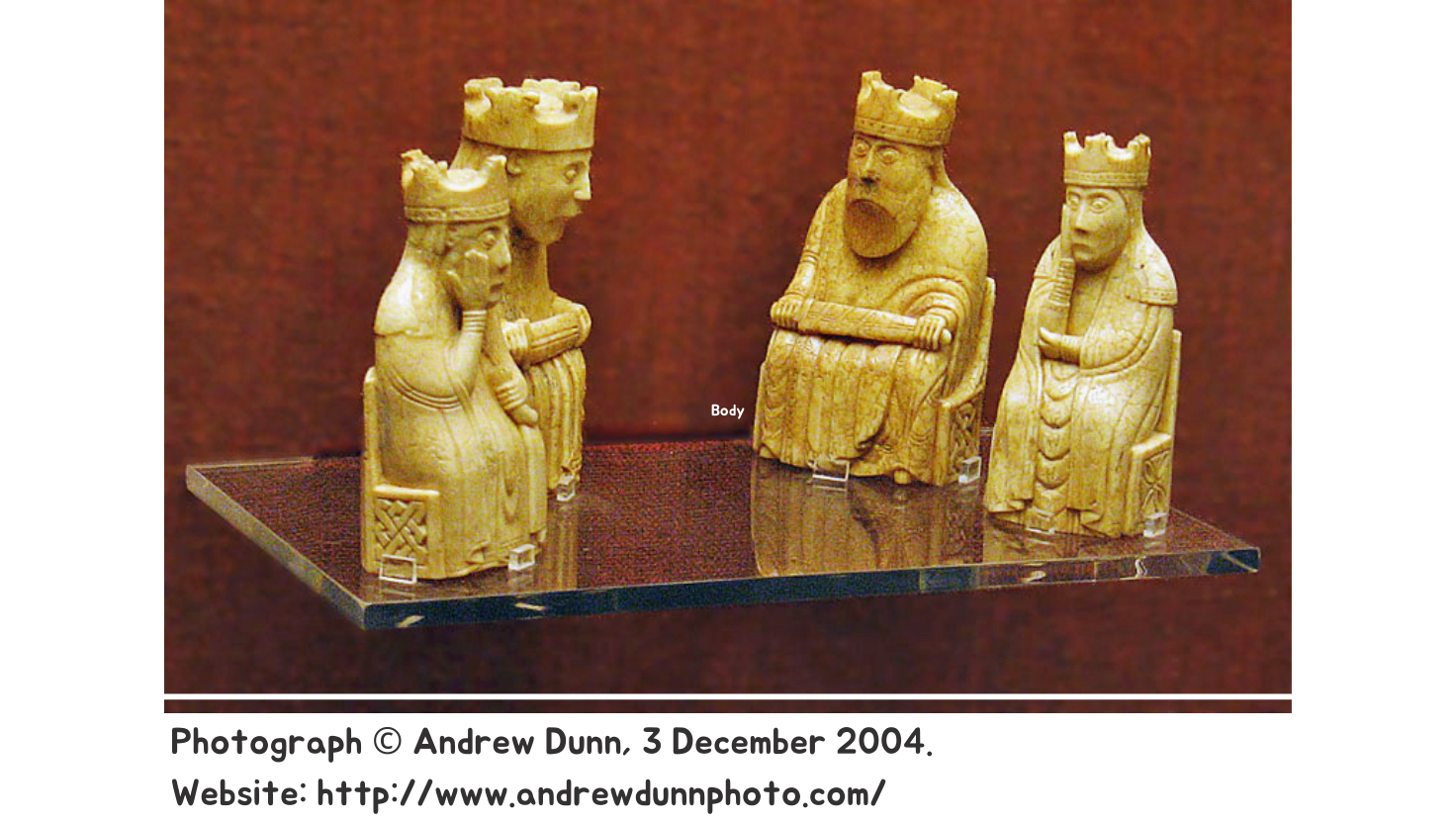
Design Details: What Makes These Pieces So Unique
What truly sets the Isle of Lewis Chess pieces apart isn’t just their age — it’s their character. These aren’t generic, abstract figures like you’ll find in the modern Staunton set. Each piece is a miniature sculpture, brimming with emotion, story, and symbolism.
The queens, for instance, sit pensively with hands to their cheeks, as if weighed down by the burdens of leadership. The kings appear noble and steady, wielding swords or orbs of power. The bishops — a rare inclusion in early chess sets — are portrayed in full religious regalia, reminding us of the strong influence of the church in medieval society.
And then there are the rooks — perhaps the most striking of all. Unlike today’s castles, the Lewis Island chess pieces give us warrior rooks: helmeted berserkers biting their shields in a trance-like rage, a nod to Viking battle traditions. These vivid depictions offer a glimpse into the Norse worldview — where kings ruled, bishops advised, and warriors defended with ferocity.
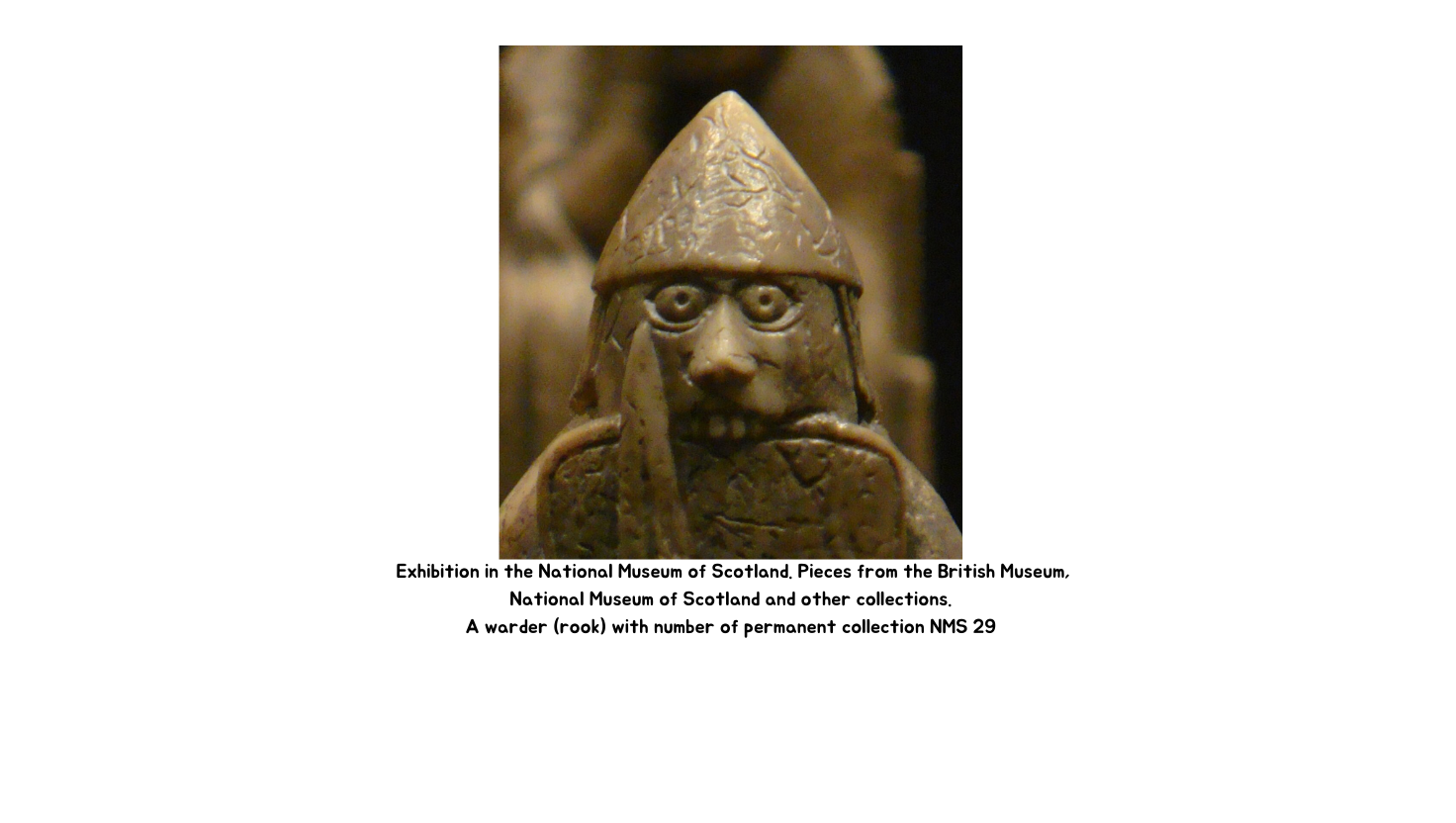
Their craftsmanship is nothing short of remarkable. Carved in high relief, the pieces blend functionality with storytelling. You don’t just play a game with these figures — you enter a saga.
It’s no wonder that collectors around the world continue to seek replica Isle of Lewis chess sets, not just for their beauty, but for the sense of history and imagination they bring to the board.
Where Are the Original Pieces Now?
Today, the original Isle of Lewis Chess pieces are split between two world-class museums — and yes, there’s a bit of drama about that too.
Eighty-two of the pieces live in the British Museum in London, where they’ve been on public display for over a century. The remaining eleven can be found at the National Museum of Scotland in Edinburgh. Both collections attract thousands of visitors each year, all eager to catch a glimpse of these mysterious medieval masterpieces.
But not everyone agrees that this is where they belong. There’s ongoing debate about whether the entire hoard should be returned to Lewis Island, where they were discovered — and where, some argue, their cultural and historical roots truly lie. For now, though, the Lewis Island chess pieces remain a shared treasure, beloved across the UK and beyond.
And while the originals aren’t for sale (sorry, fellow collectors 😿), high-quality replica Isle of Lewis chess sets allow players and enthusiasts to enjoy their magic at home. Whether you’re playing a quiet match or displaying them on a shelf, these replicas carry the weight of history in every carved detail.
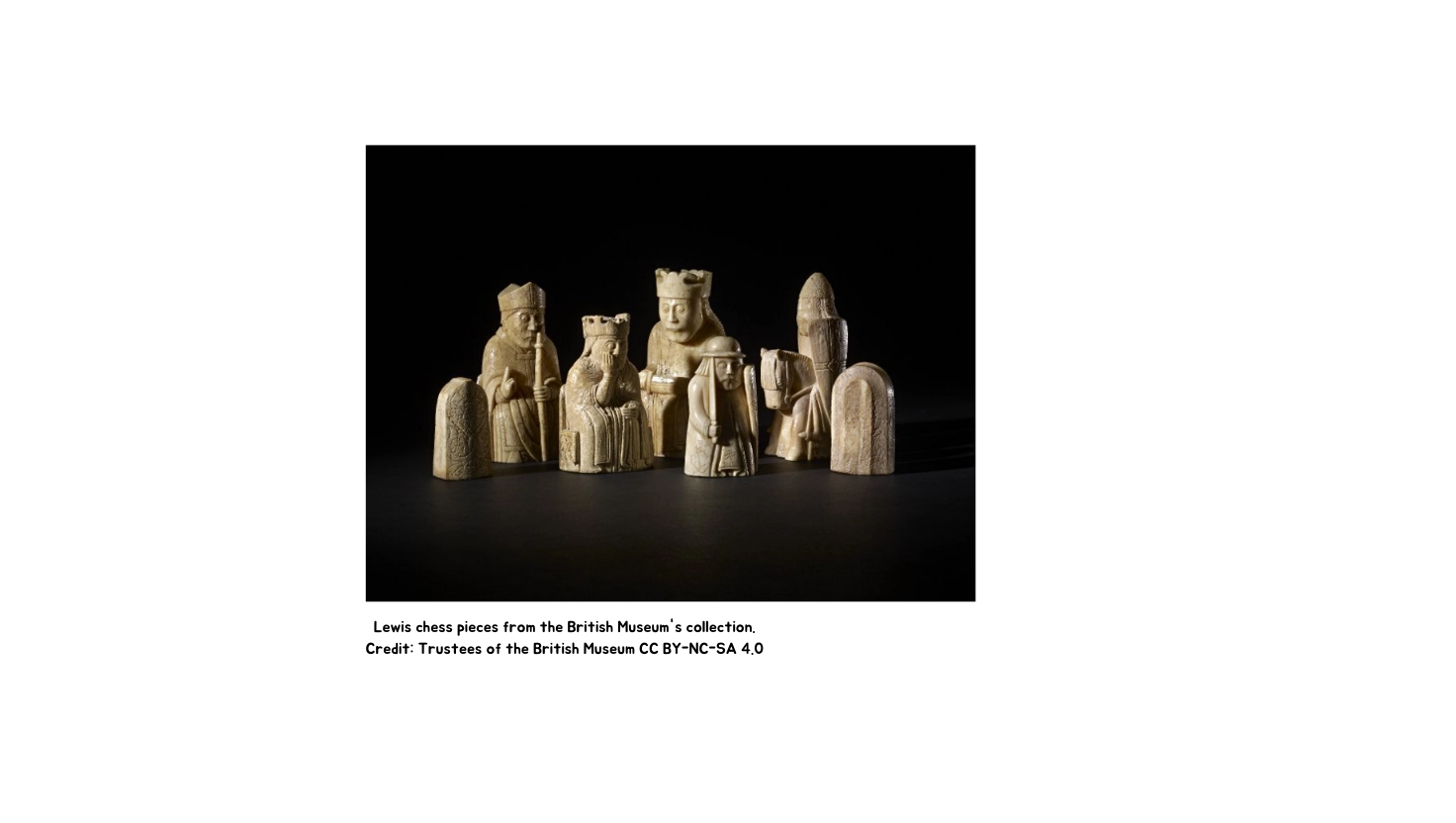
A Story Still Unfolding
From their mysterious burial beneath the sands of Lewis Island to their place in world-class museums, the Isle of Lewis Chess pieces UK have captured imaginations for nearly two centuries — and their story is far from over.
They are a reminder that chess isn’t just about kings and queens on a board. It’s about art, history, culture, and the lives of those who played long before us. Whether lost by a traveling merchant, hidden during times of danger, or simply forgotten by fate, these pieces found their way back into the world — and into the hearts of those who love the game.
So the next time you make your opening move, take a moment to think of the long-lost Viking hands that once carved these legendary warriors. Who knows what other secrets the game of chess still has buried in the sand?
*Some links in this article may be affiliate links. This means Chess Kitty may earn a small commission — at no extra cost to you — if you choose to make a purchase. We only recommend pieces we’d proudly place on our own chessboard!
